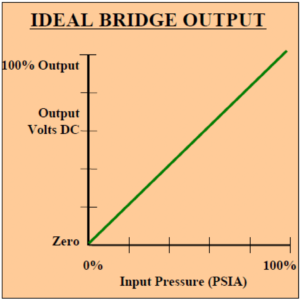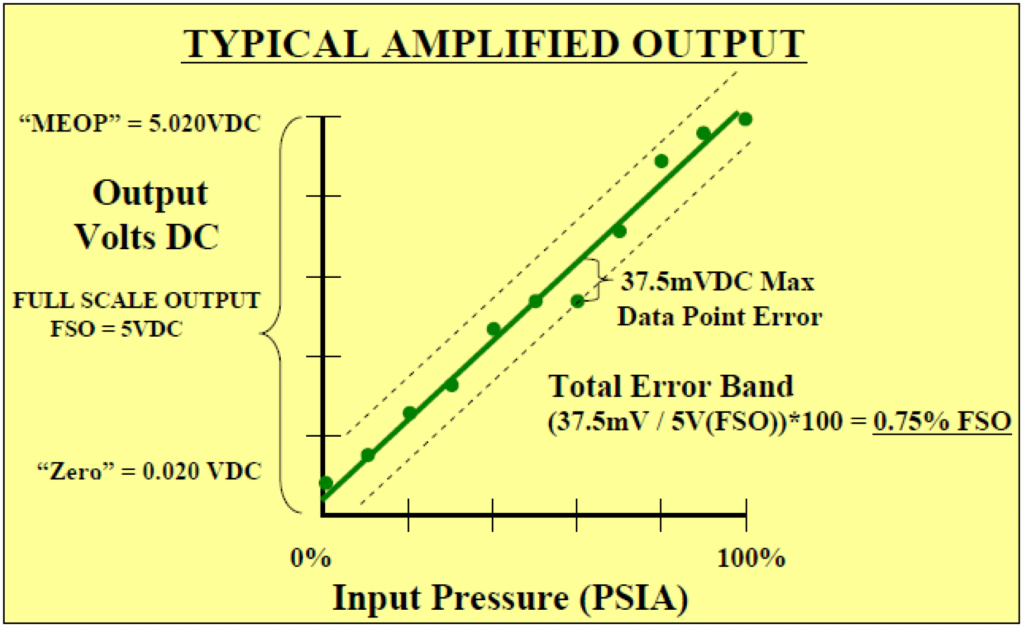Pressure transducer accuracy is expressed within a ± percent of Full-Scale Output (FSO), which represents the variation in the output signal as the transducer performs over its calibrated range [from minimum to maximum pressure at a specified temperature]. Included in this value are the mathematically combined effects of linearity, hysteresis, and repeatability errors.
Resolution refers to the smallest change in pressure that can be detected in the transducer’s output. It is commonly expressed within a ± percent of FSO. Resolution is typically not consistent throughout a transducer’s range. All Taber transducers are analog, and therefore they do not have a specific resolution value. Therefore this value is driven more by the pressure range of the transducer and the DAQ being used to record the output voltage, than by the characteristics of the transducer itself.
See more detailed descriptions of transducer accuracy terms below:
The maximum difference between the output and a specified straight line. (Expressed as a ± percent of FSO at Ambient Temp). There are three main types of linearity:
1. End Point Linearity – Linearity Error when the straight line is specified by a line passing through the two measured output endpoints.
2. BFSL Linearity – Linearity Error when the straight line is specified by the Best Fit Straight Line passing through a set of measured output values in a way that on average, every point is at its closest to that line. This line is mathematically derived using a linear regression or least squares method.
3. Theoretical Linearity – Linearity Error when the straight line is specified as a line passing through the specified theoretical output end points without any tolerances.
Maximum difference in output of a pressure value, when the pressure is applied consecutively, under the same conditions and in the same direction, typically from zero to full scale pressure. (Expressed as a ± percent of FSO at Ambient Temp)
Maximum error envelope that combines all the error effects of Linearity, Hysteresis and Repeatability using the Root Sum of Squares (RSS) method. (Expressed as a ± percent of FSO at Ambient Temp, (Referencing straight line method, RSS) ).
SEB = √(Lin Error). + (Hys Error). + (Rep Error).
Maximum error envelope that combines all the error effects of Linearity, Hysteresis, and Repeatability as well as Thermal Zero Error and Thermal FSO Error using the Root Sum of Squares (RSS) method. (Expressed as a ± percent of FSO at Ambient Temp, (Referencing straight line method, RSS) )
TEB = √(Lin Error)² + (Hys Error)² + (Rep Error)² + (Thermal Zero Error)² + (Thermal FSO Error)²


If you have a question regarding Taber Transducer products, please complete the following form and we will contact you as soon as possible.
US & Canada